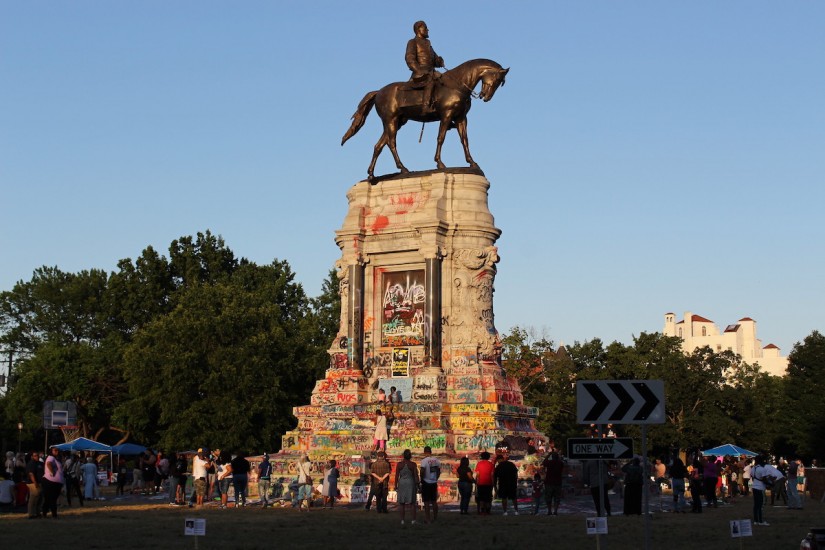Lee’s statue has cast a dark shadow over Richmond for well over a century. Part of the city’s grand plan in the 1890s to create “the Champs-Élysées of the South,” Monument Avenue was marketed as a prestige neighborhood for “whites only.” By the 1920s, the Lee statue on Monument Avenue was joined by statues to J.E.B Stuart, Thomas “Stonewall” Jackson, Jefferson Davis, and Matthew Fontaine Maury. These statues celebrated white men who guided the South through the Civil War and fought to extend the life of racial slavery — and in Maury’s case, to spread the American South’s version of slavery into Central and South America. Through secession and war, the men immortalized on Monument Avenue devoted their lives to keeping Black people in the chokehold of slavery.
Now, their time’s up. It was actually up a long time ago. It ended in April 1865 at Appomattox Court House, only to be reborn with the historical fictions created by the authors of the Lost Cause. For too long, groups such as the United Daughters of the Confederacy peddled ahistorical stories about the “war of Northern aggression” and “state’s rights,” teaching generations of school children an alternative history that ignored facts and archival evidence. By the civil rights movement of the 1950s and 1960s, the Lost Cause mythology and Confederate statues again became rallying points for white Virginia’s “massive resistance” to the greatest freedom movement of the twentieth century.
The proposed removal of Lee’s statue is an opportunity. It’s a chance for freedom to break through the dark clouds of oppression that the statues on Monument Avenue cast over us every day. But to get to that better freedom – a freedom that reflects our historical and contemporary diversity – I hope that after the Lee statue is removed we can pause, stand together, and look at those empty pedestals.
Empty pedestals are powerful symbols. In Prague during the Cold War, an empty pedestal that once supported a statue to Czechoslavak president Tomas Masaryk reminded people living under Soviet rule that they would one day emerge from the oppressiveness of an authoritarian regime.
Empty pedestals can serve a similar function in Richmond, and around the country. History won’t be erased after Lee’s statue joins the recently toppled statues of former Confederate president Jefferson Davis and the Italian navigator Christopher Columbus. For centuries, these structures supported white supremacy and obscured historical truths. Empty pedestals represent opportunities for us to grapple with history’s light and darkness. They are invitations to empathize with the perspectives of people previously marginalized from the interpretation of the past. As Edward Ayers, the Tucker-Boatwright Professor of Humanities at the University of Richmond told me, “What matters now is what we all do with what remains. We don’t have a blank slate or a clean sheet of paper on which to draw our plans, but history never does.”
